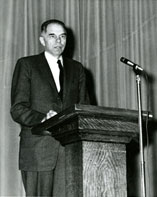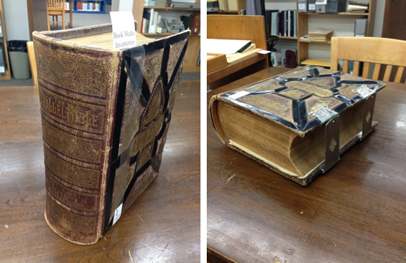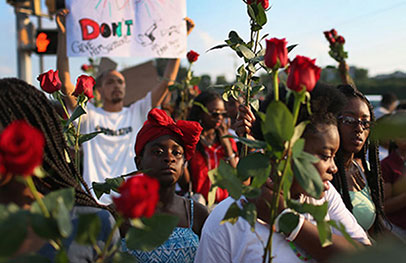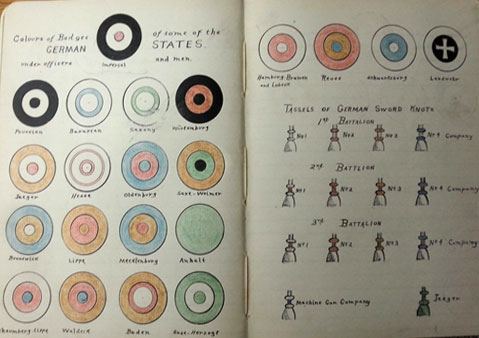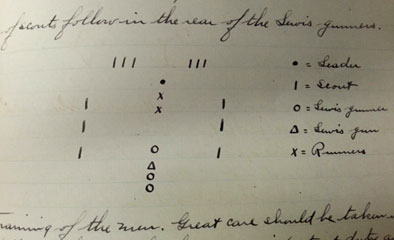 Even for Victorian dreamer, designer, artist, poet, publisher, and writer William Morris (1834-1896), the thought of his personal library being accessible around the world would have been a stretch. Luckily Sylvia Holton Peterson and William Peterson, both retired professors and authors in their own right, have taken on the task of bringing Morris’ enviable book collection together again: at least in a digital format known as The Library of William Morris—A Catalogue at williammorrislibrary.wordpress.com.
Even for Victorian dreamer, designer, artist, poet, publisher, and writer William Morris (1834-1896), the thought of his personal library being accessible around the world would have been a stretch. Luckily Sylvia Holton Peterson and William Peterson, both retired professors and authors in their own right, have taken on the task of bringing Morris’ enviable book collection together again: at least in a digital format known as The Library of William Morris—A Catalogue at williammorrislibrary.wordpress.com.
After the Petersons’ initial success, or as William calls it, their “dry run,” with the blog they created to complement their book, The Kelmscott Chaucer: A Census (Oak Knoll Press, 2011), they decided to take their passion for Morris’ life and work a step further.
“Both of us have an interest in William Morris and the Kelmscott Press, and so much has been written through the years about Morris as an artist, printer, and bibliophile that it seemed like an obvious project,” said William. “Initially we envisioned a book, but as we began to gather information, we realized that it really ought to become a digital publication. On our website we can continue to add new information, make corrections, and provide additional links as often as we want to; with a book, we would probably have  to wait a decade or more to publish a second edition.”
to wait a decade or more to publish a second edition.”
Morris himself could not have found a better pair than the Petersons to recreate his beloved collection. William has mined his extensive experience in the study of late nineteenth- and early twentieth-century English and American fine printing to write two books about the Kelmscott Press, while Sylvia was co-compiler with Jackson Boswell of Chaucer’s Fame in England: STC Chauceriana 1475–1640 (Modern Language Association, 2004). The Petersons are currently working on a book about the Daniel Press, an early adapter of the private press in nineteenth-century Britain.
The thought of reconstructing such a prestigious collection is overwhelming, but the Petersons are approaching it one book at a time and aim to compile at least 2,000 entries.
Read more of the online Fine Books & Collections article, Reassembling William Morris’ Library.
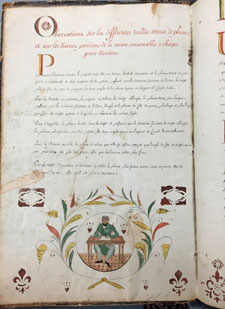 Rarely do I come across a book that is as physically beautiful as the words inside. I usually read a book because the story is intriguing or wonderful. But those books are just words on a page. While I was looking through the Archives & Special Collections today, I came across a book that is way more than words. The book, Tours d’Arithmetique by Jean Louis Bernard, was created by Bernard for his studies in 1809. Every page is a work of art. Even the script is remarkable. I sat there totally absorbed in its complexity. You can still see the pencil marks that allowed him to make straight lines. Could you imagine if books today were treated with such focus and detail? In the Archives & Special Collections you can find such pieces!
Rarely do I come across a book that is as physically beautiful as the words inside. I usually read a book because the story is intriguing or wonderful. But those books are just words on a page. While I was looking through the Archives & Special Collections today, I came across a book that is way more than words. The book, Tours d’Arithmetique by Jean Louis Bernard, was created by Bernard for his studies in 1809. Every page is a work of art. Even the script is remarkable. I sat there totally absorbed in its complexity. You can still see the pencil marks that allowed him to make straight lines. Could you imagine if books today were treated with such focus and detail? In the Archives & Special Collections you can find such pieces!


